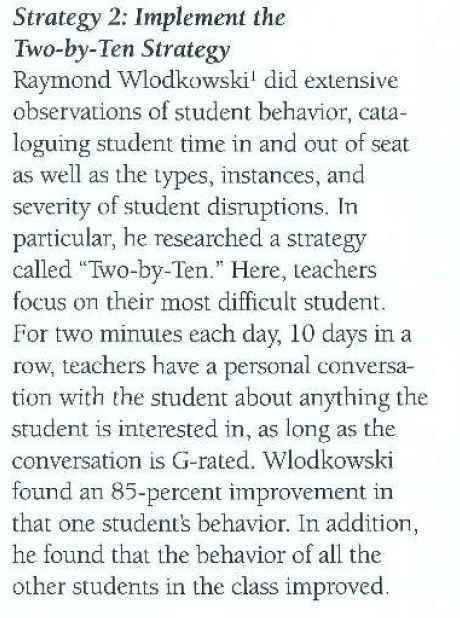
I think classroom management is one of the most difficult tasks that teacher needs to accomplish in the classroom. Having different strategies to teach appropriate behavior during a lesson is key to keep students on task and engaged. The 2 by 10 strategy presented by Smith and Lambert (2008) can be very helpful to address the student(s) who have the most behavioral problems. Interacting on a personal level with the student for two minutes before classroom time for 10 days helps build better rapport with the student. By applying this strategy, according to Smith and Lambert’s (2008) observations, it improved students’ behavior during a lesson. I will like to apply this strategy in the classroom since most if not all students care about being acknowledged beyond their academic performance. I also believe that this technique can be apply to all students in the classroom and build a stronger community in the classroom.



